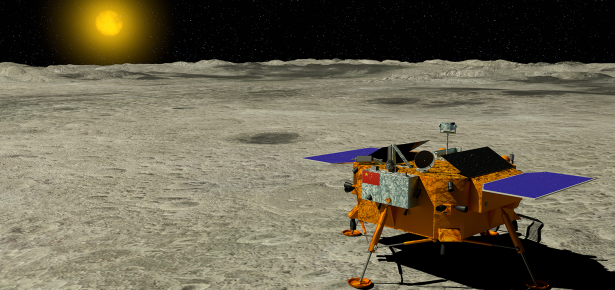
The recent lunar landing of a Chinese rover, called Chang’e-4, has renewed interest in the Chinese space program. Of course, space programs have long been a symbol of national prowess and prestige. Indeed, this is the second communist achievement on the “dark side” of the moon, as the Soviets were the first to photograph the region, earning naming rights for “Mt. Lenin” and the “Sea of Moscow.” Given the recent PRC landing, it is important to consider the history of U.S./Chinese space relations, the domestic and international benefits of accomplishments in space and the implications for the future.
The United States has had a long and complex relationship with the Chinese in space. During the early cold war, for example, the United States deported Qian Xuesen, a founder of the Jet Propulsion Laboratory and member of the Manhattan project, to the newly established People’s Republic of China, where he became the head of the Chinese space program. Although the U.S. tried to block Chinese access to aerospace science and technology for decades, the country advanced with Soviet help and made progress during the Cultural Revolution, launching its first satellite in 1970. After normalization of U.S./PRC relations (1979) and the Challenger disaster (1986), the United States opted to use Chinese rockets to launch American satellites; meanwhile, the PRC restarted a manned space program months after the collapse of the Soviet Union, orbiting in 2003. Finally, amid fears of Chinese espionage and anti-satellite warfare – the Chinese shot down one of their old satellites in 2007 – the United States banned the PRC from the International Space Station and NASA ended co-operation with the country in 2011. Undeterred, the People’s Republic launched a series of short-term space stations as preliminary steps to a permanent, manned station.
The Chang’e-4 rover is part of this growing Chinese space program and should provide benefits at home and abroad. First, the use of a secondary satellite to relay information on landing is a Chinese innovation in space communication and transportation. But the landing could also reverberate on earth: The successful launch of Sputnik, for example, quieted domestic criticism of Khrushchev for the Hungarian invasion and caused a re-evaluation of Soviet capabilities throughout the non-aligned world; the U.S. moon landing was also a diplomatic success, briefly distracting from the Vietnam war. Chinese triumphs may have a similar impact. In addition to technical advancement and possible military benefit, every success in space helps quiet criticism of the communist party at home. The landing testifies to the productivity of a state program, providing inspiration to the Chinese people and bolstering the country’s rise as a great power. Abroad, the rover leads credence to Chinese policies and abilities, potentially making foreign partners in the “Belt and Road” initiative more willing to participate if access to advanced science and technology are included – this was, after all, a main selling point for comparable American cold war programs. And like earlier American and Soviet space-travelers before them, Chinese astronauts regularly visit Hong Kong and other Asian capitals as good-will representatives.
The Chinese program will continue to progress and challenge current arrangements in space. Although the People’s Republic is America’s largest bilateral science partner, the United States does not collaborate in space and NASA remains prohibited from engaging. However, the European Space Agency (ESA) is willing to work with the Chinese and thus American policies are increasing cooperation between the ESA and the Chinese, in part because American allies are worried about missing out on Chinese advancements. Indeed, other participating nations in the International Space Station may eventually pressure the U.S. to allow Chinese participation. Finally, while the United States dramatically reduced its space program over the past decades, relying instead on a handful of private ventures, the Chinese have dramatically increased state funding as part of their national mission, much like the United States in the 1960s. Only time will tell which approach is more successful.
Science and American Foreign Relations since World War II by Greg Whitesides (University of Colorado, Denver) is now available from Cambridge University Press.
Latest Comments
Have your say!